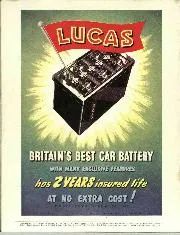
Published by the Teesdale publishing Co., Ltd
Published by The Teerdale Pubhing Co., Ltd.. 15-17. City Road. London. E.C.1. and printed by Tee & Whiten and J. Mead. Ltd.. 21, City Road: London. E.C.1. Trade Agent, Horace Marshall…
VINTAGE PETROL
One often hears a motorist say—” At that time I had a 1923 so-and-so. That was a good model.” This is because cars change every year, but some years they change more than others. How many people realise that the same is true of the petrol which they use ? Any petrol which wants to remain a bestseller has to adapt itself to suit changing conditions. Some years the changes may be very slight, because only slight changes are needed. Other years call for bigger changes. 1937 is such a year, and it is likely to be a vintage year for Shell because Shell has had the foresight and the resources to make such changes
in its petrol as are needed to keep it in step with motor-car design. This is actually done as part of the routine of the business, but the 1937 change happens to be more spectacular than usual, and I therefore propose to give readers some Idea of what it is.
Most people know that the chief change in engine design is a trend towards higher compression ratios, because it is in this way that engineers are able to give us more for a given size of engine. This is all to the good, but it does mean that the petrol has to work under much more severe conditions—and frankly, ordinary petrol cannot stand the strain. To understand why ordinary petrol is unsuitable in the modern engine, one must first of all realise that all petrol consists of hydrocarbon molecules—or
atoms of hydrogen and carbon combined together in certain fixed ways. In ordinary petrol these atoms can take the form of long chains, in which formation they are very susceptible to detonation—or ” pinking.” This is because the oxygen atoms supplied by the air from the carburetter are able to combine too easily and irregularly with the carbon and hydrogen atoms.
The problem therefore, has been to find some way of controlling the combination of the atoms, and Shell has solved it with a process called “re-forming,” by which it is able to rearrange the molecular structure of the petrol so that these atoms stay together in compact masses. In this formation they axe less susceptible to detonation, thus combustion is controlled and ” pinking” is prevented.